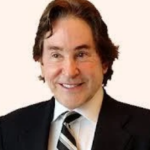Reflecting on the past year prompts an important question: Did you embrace every opportunity that crossed your path, or did fear and hesitation hold you back? Consider the transformative power of seizing opportunities, drawing on real-world examples and supporting evidence to underscore the significance of cultivating an abundance mindset.
The Mindset of Abundance:
Individuals with a mindset of abundance actively seek and capitalize on opportunities aligned with their goals. This proactive approach involves trying new things, collaborating with diverse individuals, and taking risks that set them apart from others. To foster success and cultivate an abundance mindset, it becomes crucial to recognize and seize opportunities as they arise.
Comfort Zone vs. Abundance:
Imagine your comfort zone as a cozy bubble—a familiar space where routines and habits prevail. While it feels secure, staying within this bubble can limit growth and opportunities. Abundance often lies just beyond the edges of this comfort zone.
Exploring Uncharted Territories:
Think of uncharted territories as unexplored landscapes beyond the borders of your routine. These could be new career paths, investment opportunities, or personal challenges. Venturing into these unknown spaces allows for the discovery of hidden treasures and untapped potential.

Consider the success stories of renowned entrepreneurs like Richard Branson, who founded Virgin Records by seizing the opportunity to create a mail-order record business. Branson’s willingness to take risks and explore uncharted territories exemplifies the mindset of abundance. These examples highlight that success often stems from the ability to recognize and capitalize on unexpected opportunities.
The Psychology of Risk-Taking:
Studies in psychology, such as research by psychologist Daniel Kahneman, emphasize the impact of risk-taking on decision-making and success. Individuals who embrace risk within reasonable bounds are more likely to achieve remarkable outcomes. This psychological perspective aligns with the notion that seizing opportunities, even when uncertain, is a hallmark of an abundance mindset.

Picture risk-taking as the bridge connecting your comfort zone to the uncharted territories. Crossing this bridge requires courage and a willingness to face uncertainty. Instead of viewing risks as threats, see them as catalysts for growth and abundance.
Everyday Risks in Perspective:
Relate risk-taking to everyday scenarios—an average person might consider starting a small side business, investing in personal development courses, or pursuing a passion project. These actions involve stepping outside the comfort zone, presenting opportunities for growth.
Learning from Failure:
Normalize the idea that not every risk yields immediate success. It’s okay to stumble and face setbacks. In fact, these experiences serve as valuable lessons, providing insights that contribute to personal and financial growth.
Abundance Mindset in Action:
Picture the abundance mindset as a pair of glasses that alter your perception. When you embrace risk and explore the unknown, you put on these glasses, allowing you to see opportunities where others might see obstacles. It’s a shift from scarcity to abundance.
Navigating Uncertainty:
Opportunities may not be immediately apparent in challenging times, leading to a perception of closed doors. However, adopting a positive mindset and reflecting on potential areas where opportunities might be hiding can bring them to light.

Research on positive psychology, as explored by psychologist Barbara Fredrickson, underscores the importance of a positive outlook in uncovering hidden possibilities.
Billions in Beanies:
An illustrative example is the story of Ty Warner, a retail store owner who recognized the opportunity to diversify merchandise by introducing Beanie Babies. Despite initial skepticism the willingness to adopt an outside-of-the-box visionary stance combined with taking decisive yet risky inspired action, the decision proved transformative.

The success of this new product line opened doors to online selling, ultimately changing the trajectory of the business. Warner is now counted among the top multibillionaires in America. This story highlights the power of seeing possibilities instead of problems and the profound impact on life-changing personal and professional growth.
Example: Career Change:
Consider an average person contemplating a career change. Staying in a familiar job feels secure, but the desire for growth and fulfillment prompts exploration. Taking the risk to transition into a new field might lead to unforeseen opportunities, unlocking abundance in the form of career satisfaction and personal growth.
Balancing Caution and Courage:
It’s crucial to strike a balance between caution and courage. While reckless decisions can be detrimental, calculated risks—backed by research and self-awareness—become stepping stones toward abundance.
Seizing opportunities is a catalyst for success and a fundamental aspect of cultivating an abundance mindset. Real-world examples and psychological insights emphasize that success often arises from a willingness to take risks and explore unforeseen possibilities. By adopting a proactive approach and seeing opportunities where others see challenges, individuals can pave the way for personal and professional transformations.
In essence, the willingness to take risks and explore uncharted territories is a mindset shift—a decision to view the unknown not as a threat but as a landscape rich with possibilities. By embracing risk in everyday choices, an average person can cultivate an abundance mindset that transforms challenges into opportunities and scarcity into prosperity.
References:
- Branson, R. (n.d.). Biography.
- Kahneman, D. (2011). Thinking, Fast and Slow. Farrar, Straus and Giroux.
- Fredrickson, B. L. (2001). The Role of Positive Emotions in Positive Psychology: The Broaden-and-Build Theory of Positive Emotions. American Psychologist, 56(3), 218–226.
